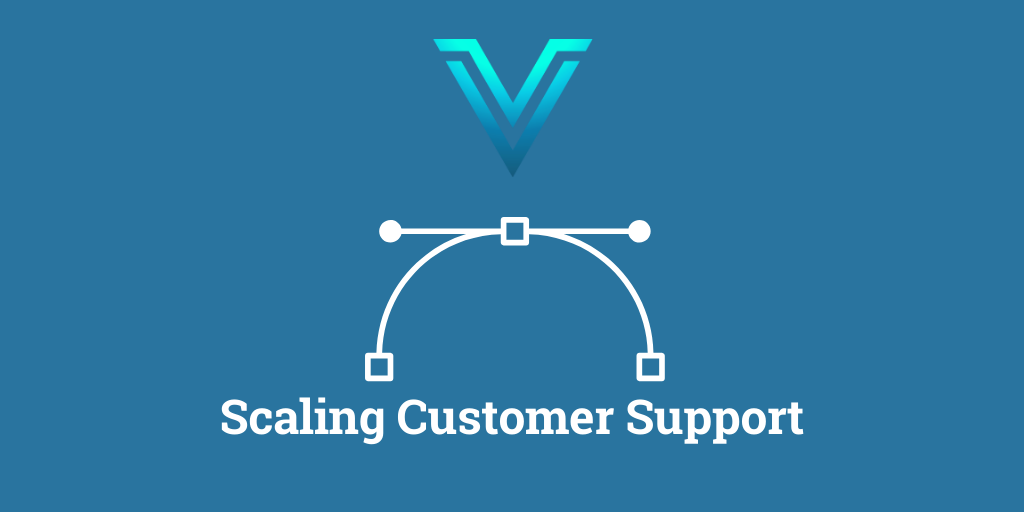I was talking with one of our portfolio founders today and the CEO asked about ways to scale their customer support center, without investing a mint. Here’s some of what I shared about low-pain, high-gain ways to scale customer support.
Not in chronological order–
- Have a dedicated customer support site, a subdomain from your site. You probably have this already, but what’s on it?
- At the top of it, have a message from your founder, walking your customer through the top 1-5 things she loves in the newest release. Use Soapbox by Wistia or your favorite video-by-yourself. The message here is “We love you and here’s why you should love us!” It sets a personal tone and encourages upgrading to the newest release.
- Below that, have your big sections like Zendesk, chat with us, FAQs, links to recorded webinars, trouble ticket logging, etc. Again, you probably have most of this, but is it static, or active?
Scaling customer support
What really makes customer support a “profit center” is a philosophy of active engagement at different “bite sizes.” Customers have different kinds of support needs. Some need outright training and a detailed onboarding plan. That level is best handled by your account management team. But what about the quick steer? The screenshot that shows them where you buried your config file? These bite-size issues are better handled through a suite of real-time opportunities. Here’s some of the things we’re seeing done well:
Customer-dedicated Slack Channel
Have your support team, a founder and a developer assigned at all times during business hours to get Slack messages from a customer-centric Slack channel. Your goal with this is to get the customers talking to each other so they actually start to manage minor support FOR you.
Customer live office hours
There are probably 2-5 things that constantly get in people’s way (after logging in, that is, but we know you have that handled). Have a dedicated 45-minute Zoom “open office hours” session for Customer Success every week at the same time. Make this a standing meeting in Eventbrite and consider having fun stuff for those who show up—some mailed swag, some Amazon gift cards, that sort of thing.
Customer self-service support library
And yes, record it. Not for surveillance, but for the transcript. Zoom at more expensive levels has a transcription feature built-in, but evening recording just audio and sending it to Otter.ai (or paying to send it to Temi.ai) can get you beautiful summaries of thorny issue resolution in that nirvana language of search—real English. By having a weekly rhythm where customer support reviews the transcript, cleans it up and sends it to your web site editor to load into your FAQ section, you get a natural update of your customer-search materials.
You should also tag any compliments your team gets for a CUSTOMER LOVE page on your web site with the customer and the date. You don’t have to name them—just keep the love coming in these real testimonials. Showcase it for your own team’s morale and your own understanding of what your actual customers really appreciate.
Tweet-tastic
When you post a delicious answer to a real customer issue in your FAQs and self-service library, have your social media intern or person automatically put it on social. This is another easy weekly process. By the way, don’t post the information, ie–the facts. Make folks click for that—post why it matters. What will it help people do? Have an attitude of fun in your social voice about answering cool questions for cool people, and being happy to share the culture of your customer.
Chat is the new chocolate
By that, I mean in a digital-only user conference world, chat is a huge way to help customers and one of the easiest for your team to scale. You probably already have a plug-in-chat bot on your site, but how smart is it? One of the tools we love is SWIVL, a chatbot back end that allows you to copy from updates like the ones you get on Slack and Zoom sessions, and directly put that content into the chatbot’s data library so that it knows how to answer “that question” your customer just posed on Zoom with “this answer” your Zoom office hours host just gave them. This is another weekly rhythm for your customer support team–porting the FAQs into the chatbot.
By taking the voice into data, and taking the data in AI, you can get a crazy cool customer support scale. Keep scaling in synch with the real customer voice.

